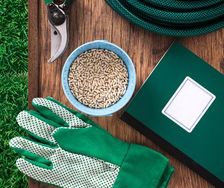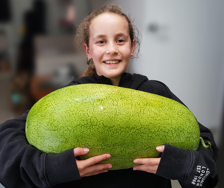Yates Account
Join now
Create a Yates account today!
Sign up to join the Yates Garden Club for monthly e-mails packed with seasonal inspiration, tips for success & exclusive promotions.
Plus if you’re a Garden Club member you can take part in the Yates Growing Community - a blog to share successes, get advice & win prizes in fun challenges along the way!

Forgot password
Enter the email address associated with your account, and we'll email you a new password.

Does the thought of pruning roses make your palms sweaty? This topic seems to cause a lot of angst, even among experienced gardeners, but it’s not really that difficult.
Here's how to do it. If you work through these steps, your roses will look blooming beautiful.
Roses respond really well to pruning, as they flower on the new growth that pruning stimulates. Pruning keeps them neat, attractively-shaped, healthy and sets them up for a magnificent flowering season. And the good news is, if you make a mistake it's no worse than a bad haircut - it will grow back!
July is the month when most roses are pruned. There are a few exceptions, including certain old-fashioned roses, as well as banksia and many weeping standards, which should be pruned after they flower in spring.
For all other roses, mid-winter is the time to remove dead, old or diseased wood, shorten healthy branches to promote new growth, and keep your roses a manageable size and shape.
If you'd like to know more about general pruning fundamentals, we also have a detailed article on pruning here,

So, let’s get into it. Just like a good cook, it’s wise to gather ingredients and tools before you start.
Here's What You'll Need:
- Garden gloves (choose the heavy-duty type, roses are prickly little beasts)
- Clean, sharp secateurs
- Narrow bladed saw or pruning saw
- Yates Lime Sulfur - for a protective clean-up spray after pruning
- Garden sprayer

Always cut just above an outward-facing bud, at a 45° angle.
How to Prune, Step-by-Step
1. Remove any weak, spindly, criss-crossing or dead stems, cutting at the base of the shoot/stem. If it’s an established bush, look critically at the stems and remove the oldest, thickest woody canes, by sawing them cleanly off at the base. Dead wood stays dead, so it doesn't hurt to remove it.
2. Prune about one-third of the length off the remaining green canes, cutting just above a bud on the outside of the stem, angling your cut at 45°. Always choose a bud that faces outwards. The new growth will come from this bud, so plan ahead and it will head off in a favourable direction (Check the diagram for the cutting location and technique).
3. Look towards the bottom of the rose bush and remove any ‘suckers’ or shoots sprouting below the bud union (that's the knobby bit at the base of the plant where the rose was grafted onto its rootstock) to stop them from growing faster and taking over. They often pop up out of the soil close to the base of the rose. The best tip to get rid of suckers is to gently uncover them, so you can see where they're sprouting from. Put on your gloves, support the stem with one hand and forcefully rip the sucker off with the other - this prevents them from re-sprouting from a stump, which can happen if you cut them. Make sure you remove suckers as soon as you spot them, they're quite difficult to wrench off once they get established!

4. Stand back and take a good look at the rose. Does the remaining wood seem healthy and vigorous? Is the centre of the bush nice and open so that the sun and air can get right into it? Complete any tidying up that’s necessary.
5. Remove any remaining foliage from stems, clean up any fallen foliage around the bush and discard it. Don't put leaves or cut stems in your compost, they can harbour diseases until next season; pop it into green waste.
6. Dilute Yates Lime Sulfur Concentrate and spray the whole rose - this helps remove any scale and fungal spores from the stems. Pruning time is the ideal window of opportunity to apply Lime Sulfur, as it will defoliate the leaves on any new growth - don't leave it too late to spray!
7. Add a good layer of organic mulch, like pea straw or lucerne around the base of the bush, taking care to avoid direct contact with the rose stem. If you leave a gap, about 10cm from the stem, it won't create the humid conditions that make disease pathogens thrive.

Removing a dead woody stem from a rose.
Rose Pruning Tips
- In warm climates, before applying the mulch, sprinkle Yates Thrive Rose & Flower Granular Plant Food over the soil. In frosty areas, it’s better to wait until the last frosts before feeding your roses.
- Floribunda or Polyantha roses are usually cut back harder than bush roses - shorten their stems by one-half.
- Climbing roses require slightly different treatment. Give them a light prune in winter, saving their main prune for after flowering in spring, removing old canes and dead wood. Leave the newer, green canes - cut back the lateral (side) branches on these canes down to 2 or 3 buds. Nip off any suckers sprouting from the base of the plant. Very young climbers shouldn't be pruned hard in their first few years, just take off any dead wood until they get established.
- You'll be doubly rewarded by giving your roses a light prune in summer – it’ll bring a second flush of blooms in autumn! Remove dead flowers, dead or diseased stems and trim back by one-third.












Share
Share this article on social media